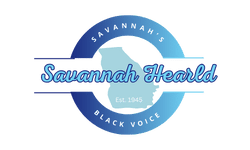[Editor’s note: This post is the third in a new column for eSchool News. In her column on ‘Personal Development’, eSchool News Columnist Jennifer Abrams focuses on tangible takeaways, tools and teachings that all those working in schools can use to develop their leadership. Read more about the column and browse future content here.]
“When you listen to someone, it’s the most profound act of human respect.” -William Ury
I take note after I started my paintings as a certified developer and professor. It used to be the primary moment in my day-to-day paintings the place scholars weren’t my fast focal point. My interactions every day have been with adults, and I noticed that I wasn’t as ready for this kind of communique given my credentialing and my graduate research.
I had a credential in how you can train scholars the topic of English, and what changed into increasingly more sunny used to be that I didn’t have a credential in how you can paintings successfully with adults; and without a doubt didn’t have a background or an deliberately evolved skillset on how you can be an efficient staff member.
Listening as a Discovered Ability
I labored at the ability of being an efficient staff member and proceed to take action. A lot of my consulting colleagues, inside of their paintings on training, participating and educating focal point on listening as a key ability to grasp outside and inside the school room.
On the Thinking Collaborative skilled builders help educators day-to-day and deliberately in development this skillset. They discuss to a lot of collaborative talents that manufacture a bunch member efficient. [More on other skills in future columns.] This column will focal point on a kind of ability units, listening.
A lot has been written about listening. Listening is mentioned and defined in books, in TED talks, on YouTube, and in numerous articles in training, industry and in fitness assist. Why such a lot of citations? As a result of we tend not to do it neatly.
This can be a pivotal a part of the ability development that we are hoping scholars be informed. In truth, I’ve continuously said that the Ordinary Core Atmosphere Requirements on Talking and Listening, corresponding to 11-12 B and C “Work with peers to promote civil, democratic discussions and decision-making, set clear goals and deadlines, and establish individual roles as needed;” and, “Propel conversations by posing and responding to questions that probe reasoning and evidence; ensure a hearing for a full range of positions on a topic or issue; clarify, verify, or challenge ideas and conclusions; and promote divergent and creative perspectives,” if truth be told aren’t lived out in group of workers conferences that I take part in or eyewitness within the colleges through which I paintings.
3 Varieties of Listening
For the reason that the paintings on energetic listening may speed pages and pages to study, I can point out most effective the briefest but, what I think is without doubt one of the maximum robust piece of recommendation on listening that I’ve gained: To deliver to be extra ‘other focused,’ take note of your listening ‘set asides.’
Laura Lipton and Bruce Wellman (www.miravia.com) discuss to the theory of ‘setting aside’ positive stances we continuously soak up communique. Rather of really being provide and listening to the individual closely we don’t put aside our wishes and those wishes get in the best way of our communique. Our eager asides come with
- Autobiographical listening: The negligible we pay attention one thing that converses with our year, we percentage. We are saying, “Me too. I remember when…” or “That has happened to me! In fact, just the other day…” Once we percentage those ‘me too’ moments we may imagine we’re connecting and providing solace, however if truth be told it could simply be us taking the point of interest clear of what the individual used to be announcing and hanging the highlight on us.
- ‘Dishing the dirt’ listening: The alternative individual feedback on one thing and also you upload in a couple of extra tidbits of data. “Did you know she was…” or “That isn’t the first time I have heard that. Joanne says…” There’s a moment to percentage background knowledge that may provide the dialog. There may be simply ‘dishing’ and that isn’t all the time an invaluable piece of data to percentage.
- Resolution-oriented listening: “You know what you need to do about that?” is one thing we instantly deal as a reaction if we’re within the territory of resolution orientated listening. “You need to do this…” or “Have you tried…?” Answers will also be very useful in some statuses however lots of the moment answers aren’t empowering, nor do they display the individual you’re speaking to that you’re feeling they’ve ‘got this’ and will care for their very own demanding situations. I’m involved in answers and lots of the moment ask myself if a proposal could be a greater solution to deal an concept. The hot button is to invite your self, “What are my reasons for saying this? And “Does this serve my colleague to hear this?”
There are a lot alternative listening talents to assemble as neatly, together with:
- how you can paraphrase
- how you can craft a clarifying query
- how to concentrate on your non-verbals
- how you can upload your standpoint.
All of those listening talents are legitimate and significant to efficient collaboration.
Build up our listening talent can help us in attaining at top ranges in our faculties. (See Hattie’s research on collective efficacy).
